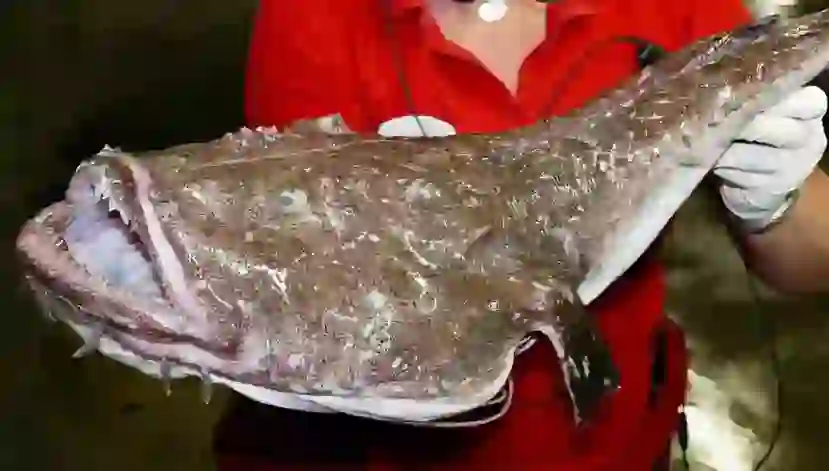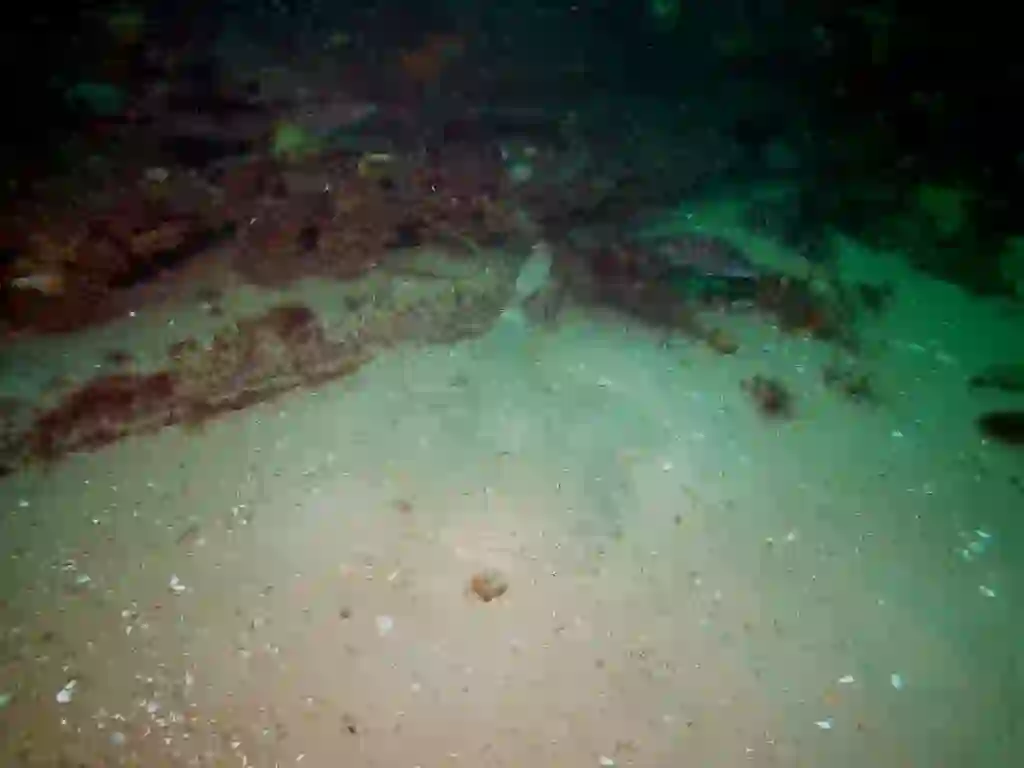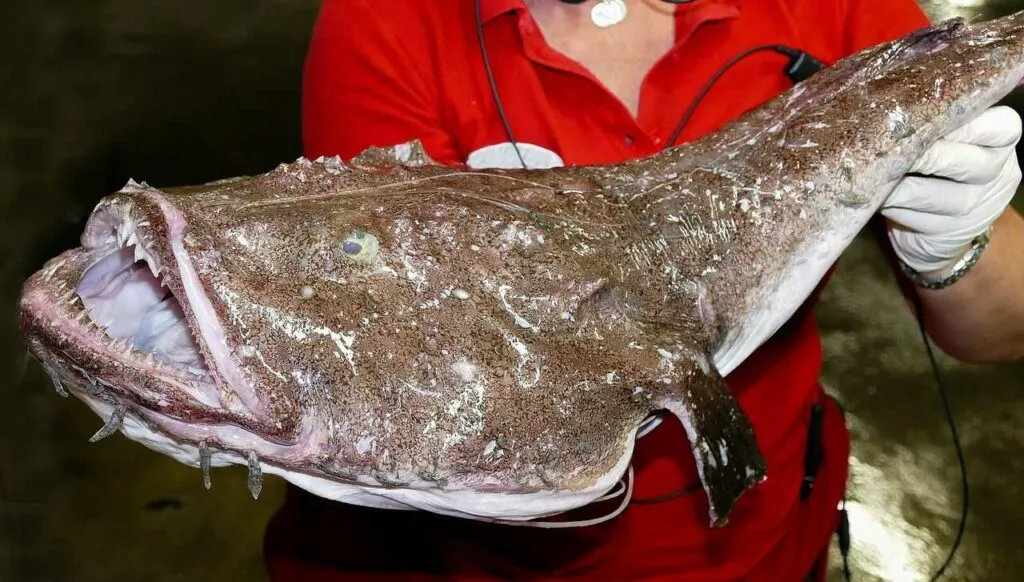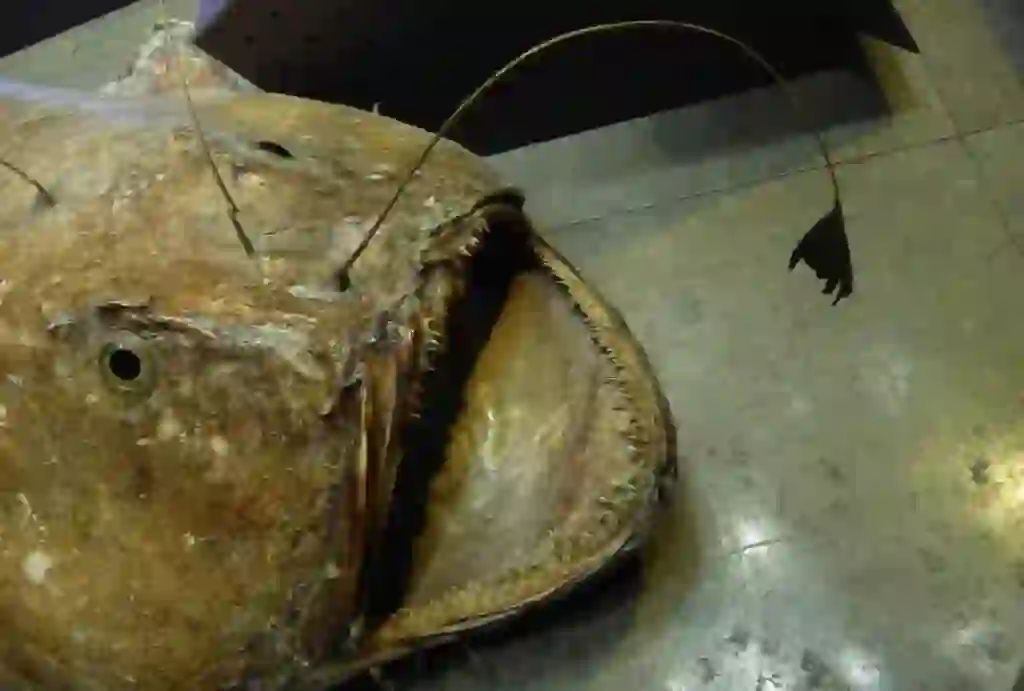
Monkfish
Monkfish
Monkfish
When you hear the word "deep-sea fish," what fish do you imagine? I think most people don't know the types and names of deep-sea fish, but many people think of monkfish. Monkfish have a grotesque form, but in fact, they are also major fish that are edible in Japan. However, few people know about its ecology as a species. So, this time, let's take a closer look at the monkfish, which is a familiar deep-sea fish that can also be eaten! In this article, unless otherwise stated, we will focus on monkfish, which is also known as the blackmouth angler.
Monkfish Basic Infomation

Lophiiformes-Lophiidae-Monkfish genus.
Length:around 40cm.
Monkfish are distributed all over the world and live in the East China Sea, the western Pacific Ocean, and the Indian Ocean. They also live in various places from Hokkaido southward in Japan, and it is not uncommon to see them.
At first glance, they have an appearance that is unlike a fish, and some people may find them grotesque. They have a large mouth and developed teeth. The teeth are long and sharp, and grow inward. This is because they have a valve function that prevents the prey from escaping.
Not only their mouth, but also their esophagus is wide, so they swallow their food whole at once. That’s why they have a large head. However, their body is more “wide” than “big”. They are flat overall, probably to make it easier to catch prey by hiding in the sand or crevices.
Monkfish live in the deep sea, so their vision is not very developed. On the other hand, their organ that controls the sense of smell is developed, and especially the males have 2 to 3 times stronger than the females.
They have a characteristic kidney, which has a urinary tubule, but the glomerulus that filters the waste in the blood gradually degenerates as they grow. The urine of general fish is made by the filtration of the glomerulus and the reabsorption of the urinary tubule, but monkfish only excrete the secretion of the urinary tubule as urine.
Next, let's look at the ecology.
Basically, monkfish live in the deep sea at a depth of about 30 to 600 meters. However, they migrate to shallow waters during the warm season. However, the scale is not very large.
They are not good at swimming, so when they detect the presence of enemies, they do not run away but hide themselves. They stir up a cloud of sand and hide their flat body in the sand.
Many types of monkfish grow stronger females than males. They grow faster, have larger bodies, and live longer. Depending on the type of monkfish family, there are cases where the males are assimilated or eaten by the females. This is a sad ending for the males, and it shows the uniqueness of their ecology.
Monkfish Q&A

Where does the monkfish get its name?
In English, it is called "monkfish", but in fact, in the case of the Japanese name, it is named "ankou". This time, why is it called ankou by its Japanese name? We will introduce its origin.
There are various theories about the origin of the name ankou, but it is not clear which one is correct as of 2023.
I will briefly introduce each theory.
①赤魚(akawo)Theory derived from the color of the red body. ※Red says "aka" in Japanese.
②安居(ankyo)From the way he sits still in the rock hole. ※Staying still is called "ankyo" in Japanese.
③顎(ago)From developed teeth and massive jaws. ※The jaw is called "ago" in Japanese.
④安康(ankou)From the figure of waiting for food leisurely in the sand. ※Being peaceful and leisurely is called "ankou" in Japanese.
⑤暗愚(angu)Because it moves slowly and is moron, because it looks creepy. ※moron is called "angu" in Japanese.
⑥アンコ(anko)A toad in the dialect of Chiba Prefecture. It is said that in the old days it was confused with a frog.
Since it has a characteristic appearance, it is highly likely that it was named ankou from its appearance.
Also, if you write monkfish in kanji, it becomes 鮟鱇 (ankou).
There are many theories like this, but it is said that the origin of the name was already unknown at the time of the Edo period. By the way, it also appears in the literature of Japan. The oldest is the Muromachi period "Shojin Gyōrui monotari", a parody work of "Heikemonogatari" in which anthropomorphic fish and birds fight.
Maybe the fact that it looks interesting on the outside can be entertainment now and in the past.

Is it true that monkfish catch other fish by fishing even though they are fish?
It's true.
Monkfish do not swim well, and even if they chase the fish they feed on, they will escape. Therefore, monkfish gave up chasing and acquired the habit of catching bait by using the fluttering organ above the mouth, which is its biggest feature, as pseudo bait.
It hides its body on the seabed or in the crevices of rocks and slowly moves the simulated bait. Those lured away will approach without knowing that they are monkfish and will be preyed on in no time. The predation speed is unthinkable from the usual appearance of monkfish.
In addition, the type of "atlantic footballfish" emits light emitting light on the pseudo-bait, which improves the attraction accuracy. It may be said that it is better at fishing than monkfish.
The ambush and prey on bait looks just like a fisherman.

What do monkfish eat?
Monkfish are carnivorous and prey on small fish, plankton, squid, shrimp, and so on. However, these are just examples, and some types also prey on small sharks and sea urchins.
They have a strong appetite and have been confirmed to eat more than a third of their body weight at once.
They also occasionally come to the surface and prey on seabirds. The figures of gulls and penguins have been confirmed in the stomachs of dissected monkfish.
They are very greedy for food, but some types have preferences and may avoid hard or spiny things.
They catch their prey off guard with their leisurely movements and catch them at once, so they can be said to be a terrifying hunter for the prey.

Are there any types of fish that are close to monkfish?
There are quite a few types of monkfish, so there are also closely related species. In Japan, the types of monkfish that are called monkfish are monkfish and “yellow goosefish”. Here, we will briefly introduce yellow goosefish.
Monkfish and yellow goosefish are famous in Japan because they are edible. Especially yellow goosefish is commonly seen, and they are not distinguished much in the market.
However, the size is quite different. Monkfish is about 40cm long, while yellow goosefish is about 1.5m long. Also, monkfish is black, but kiankou is yellowish-brown. Their ecology and diet are not much different, and their style of ambushing is of course the same.
When viewed from above, it is sometimes compared to musical instruments, and it is said that the monkfish resembles a banjo and the yellow goosefish resembles a biwa.

What are the natural enemies of monkfish?
The biggest natural enemy of monkfish is probably us humans, especially Japanese.
In Japan, we use monkfish as food and eat them without wasting anything, as if there is no place to throw them away.
The way of cutting monkfish is unique and has become a local specialty. Monkfish are slimy and have soft flesh, so it is difficult to cut them on a cutting board. In some areas, monkfish are hung on sturdy hooks and cut their skin and flesh while rotating them.
Also, in the Shimokita Peninsula of Aomori Prefecture, there is a method of cutting them on the snow called snow cutting. It has a cooling effect and keeps the freshness.

Would you like to become a part of the 'Animalbook.jp'?
Turn your knowledge into Q&A and share it with the world. ※Publication will be activated after purchase. Let's share information together!
Monkfish Type of List

- Lophiidae
- Lophius litulon
- Lophius americanus Valenciennes
- Lophius budegassa Spinola
- Lophius gastrophysus Miranda Ribeiro
- Lophius piscatorius Linnaeus
- Lophius vaillanti Regan
- Lophius vomerinus Valenciennes
- Lophiodes bruchius Caruso
- Lophiodes endoi Ho & Shao
- Lophiodes fimbriatus Saruwatari & Mochizuki
- Lophiodes insidiator
- Lophiodes miacanthus
- Lophiodes mutilus
- Lophiodes naresi
- Lophiodes triradiatus
- Lophiodes caulinaris
- Lophiodes gracilimanus
- Lophiodes infrabrunneus Smith & Radcliffe
- Lophiodes iwamotoi Ho, Séret & Shao
- Lophiodes kempi
- Lophiodes maculatus Ho, Séret & Shao
- Lophiodes miacanthus
- Lophiodes monodi
- Lophiodes reticulatus Caruso & Suttkus
- Lophiodes spilurus
- Sladenia gardineri
- Sladenia remiger
- Sladenia shaefersi etc.
Information
Congratulations! You are the first commenter!

Create Your Favorite List!
Monkfish
Save the animals you love! Build your own list to quickly revisit your favorites later.

Would you like to leave a comment?
※Please note: This is for the purchase of rights to post comments within the article.
Find Your Favorites!
Our shop offers a unique and attractive selection of goods themed around various animals.
Monkfish References

- Wikipedia https://ja.wikipedia.org/wiki/アンコウ
- ぼうずコンニャクの市場魚介類図鑑 https://www.zukan-bouz.com/syu/アンコウ
- umito. https://umito.maruha-nichiro.co.jp/article34/
- おさかなラボ http://www.iwaki-gyorui.co.jp/osakanalabo/archives/1350
- コトバンク https://kotobank.jp/word/アンコウ-29120
- 八面六臂 https://hachimenroppi.com/wiki/details/ankou
- のん気な魚屋 https://mokuyouichi.com/sakana/sengyo/a/annkou.htm
- 旬の食材百科 https://foodslink.jp/syokuzaihyakka/syun/fish/ankou5.htm
Monkfish Introduction of media used

出典:https://commons.wikimedia.org/wiki/File:Der_Seeteufel.jpg

出典:https://www.pexels.com/ja-jp/photo/10648935/

出典:https://commons.wikimedia.org/wiki/File:Baudroie_commune.jpg

other
出典:https://commons.wikimedia.org/wiki/File:Oarai_Anglerfish_Festival_2014,_Cutting_Anglerfish.jpg

Help Enrich Our Animalbook.jp with Your Media!
We are constantly looking to expand and enrich our Animalbook.jp with amazing photos and videos of animals. If you have any media that you'd like to share, please contribute and help us showcase the beauty and diversity of the animal kingdom. Your submissions will be credited and featured in our encyclopedia, reaching a wide audience of animal lovers.




















